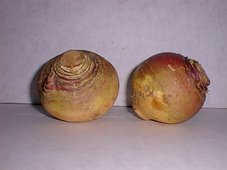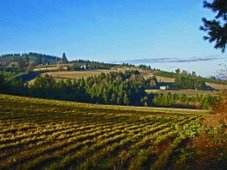 Due to mounting concerns about the quality of pet food in the U.S., ARSI has been developing an experimental recipe for pureed rutabagas that can be safely added to any pet-food blends that remain on the market. ARSI hopes that these experiments will eventually open vast new markets for rutabaga farmers.
Due to mounting concerns about the quality of pet food in the U.S., ARSI has been developing an experimental recipe for pureed rutabagas that can be safely added to any pet-food blends that remain on the market. ARSI hopes that these experiments will eventually open vast new markets for rutabaga farmers.In our experiments to date, rutabagas must be pureed because laboratory trials suggest that dogs and cats find traditional mashed rutabagas too coarse for their taste. However, the extreme macromolecular density of rutabagas presents serious challenges to creating purees. The following experimental recipe has shown some promise in reducing preparation times for a pureed rutabaga additive to pet food.
Pureed Rutabaga Pet Food Additive
Experimental recipe #ARSI-9 - 26Z48
[Not suitable for human or animal consumption.]
- Peel and dice 8-10 fresh rutabagas
- Boil vigorously for 28 days or until softened
- Marinate for 96 hours in 2 gallons of hydrochloric acid
- Drain thoroughly to remove all acid residues, carefully following acid-base extraction procedures approved by the American Chemical Society*
- Mash, blend and pulverize into a thick smoldering paste
- Add 8 cups whole milk
- Add 2 pound of butter
- Blend with 20 pounds of dried pet foods, avoiding those subject to recall
- Optional: serve dripping with brown gravy or other meat sauce to enhance the pungent natural flavor of the rutabagas
[Note: Mixed with gray food coloring, pureed rutabagas also serve
as a reliable substitute for mortar in various masonry applications.]
*The most delicate part of the process involves a strict application of the following formula to the acid-base extraction process:
![]()
PHOTO: Acid-base extraction towers for marinated rutabagas at ARSI's International Headquarters in Forest Grove, Oregon.





